European Ash Tree
- October 10, 2023
- 0 comment
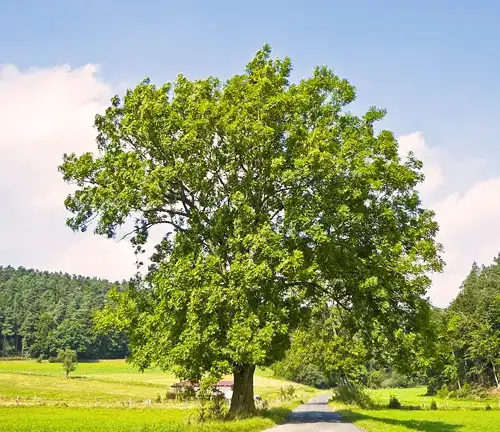
The European Ash Tree, scientifically designated as Fraxinus excelsior, stands as a majestic emblem within Europe’s ecological tapestry. Characterized by its commanding height and the grace of its pinnately compound leaves, this deciduous giant commands attention in woodlands, parks, and urban avenues across the continent. As the seasons shift, the tree’s crown adorned with serrated leaflets unfolds into a vibrant sea of green, creating a picturesque spectacle.
Beyond its aesthetic allure, the European Ash has played a pivotal role in human history, with its robust and pliable wood serving utilitarian purposes ranging from traditional tool craftsmanship to the construction of timeless furniture. However, the tree now confronts a formidable adversary in the form of the Emerald Ash Borer beetle, an invasive species wreaking havoc on ash populations. This threat underscores the urgency of conservation measures to safeguard this iconic species, not only preserving its intrinsic ecological value but also ensuring that it remains a symbol of resilience and natural grandeur in Europe’s diverse landscapes.
| Characteristic | Description |
| Scientific Name | Fraxinus excelsior |
| Height | 70-80 feet |
| Canopy Spread | 10 to 15 meters |
| Flowering Season | Spring |
| Soil Adaptability | Thrives in various soil types, from well-drained to moist soils |
| Sun exposure | Full sun to partial shade |
| Growth rate | Fast |
| Fruit | Samara (winged seed) |
| Geographic Range | Native to Europe, found from the Mediterranean to northern regions |
| Leaves | Pinnately compound with 5 to 11 leaflets |
A Brief History
The European Ash Tree, scientifically known as Fraxinus excelsior, has woven its roots deep into the tapestry of European landscapes and culture. For centuries, this iconic deciduous tree has stood tall and proud, witnessing the ebb and flow of history. Its story is one of endurance, adaptation, and a profound connection with the people of Europe.
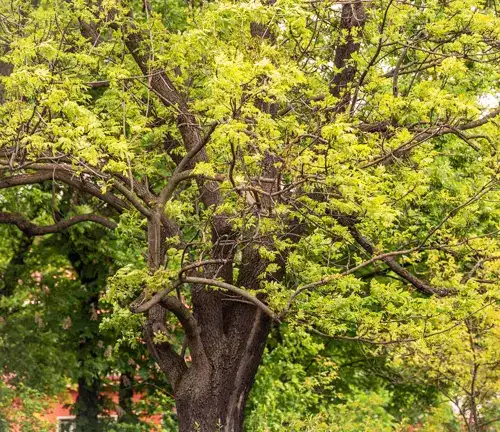
Color/Appearance
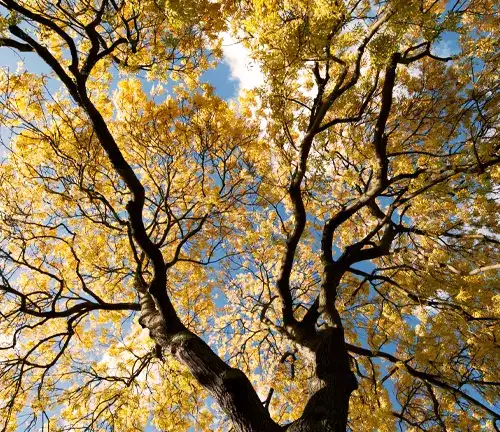
One of the first things that captivates the beholder is the European Ash’s striking appearance. With its towering stature and gracefully arching branches, it is a sight to behold. The compound leaves, typically comprised of 5 to 11 serrated leaflets, create a lush canopy that shimmers with various shades of green during the spring and summer months. However, the tree’s aesthetic charm extends beyond its leaves. Its bark, initially smooth and gray, matures into a distinctive diamond-shaped pattern that adds character to its already impressive visage.
Unique Features
What sets the European Ash apart are its unique features. Notably, it is one of the few trees that can withstand a wide range of soil types and moisture conditions. This adaptability has allowed it to thrive in various ecosystems, from wet woodlands to dry hillsides. Additionally, the wood of the European Ash is renowned for its pale color, straight grain, strength, and flexibility, making it highly sought after for a multitude of purposes.
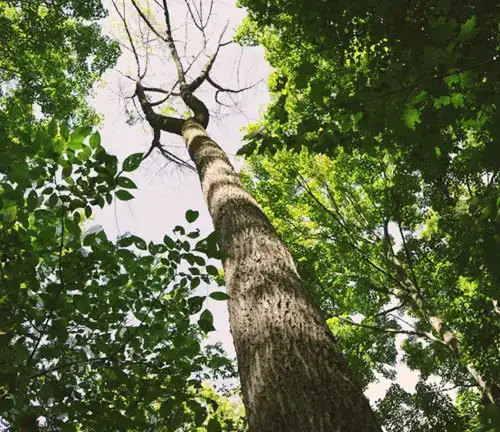
Ecological Importance
The European Ash plays a pivotal role in the intricate web of Europe’s ecosystems. It provides shelter and sustenance to a diverse array of wildlife, from birds to insects. Its leaf litter enriches the forest floor, contributing to soil health and promoting biodiversity. The tree’s presence also helps regulate local climate conditions, providing shade and cooling effects during the hot summer months.
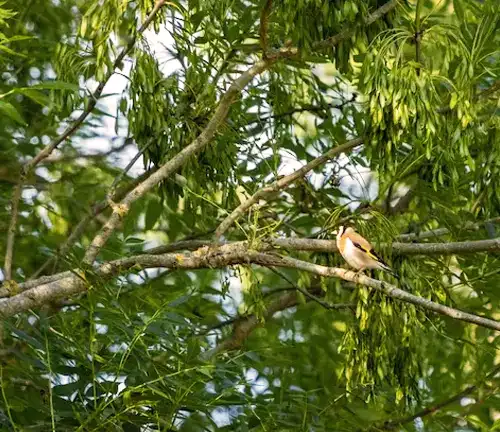

Adaptation and Resilience
One of the most remarkable attributes of the European Ash is its ability to adapt and survive in a constantly changing world. Whether facing varying climate conditions or soil types, this tree has demonstrated resilience, a quality that has allowed it to endure through the ages.
Cultivation and Care
Cultivating European Ash requires an understanding of its unique needs. From proper planting techniques to maintenance, caring for these trees is essential to their health and longevity. Understanding their preferences for soil, water, and sunlight is crucial for their successful growth.
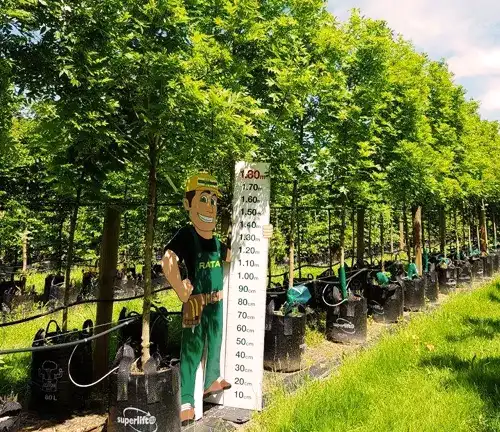
Wood Products and Applications

The wood of the European Ash is prized for its exceptional qualities. Its pale color and straight grain have made it a favored choice for craftsmen and carpenters throughout history. It has been used to create everything from traditional tools and fine furniture to sports equipment like baseball bats and hockey sticks.

Other Uses
Beyond its wood, the European Ash has additional uses. Its leaves, when composted, enrich the soil with nutrients. In folk medicine, various parts of the tree have been used for their potential medicinal properties.
Benefits
The benefits of preserving the European Ash Tree extend far beyond its intrinsic value. It supports biodiversity, provides habitats for various species, and contributes to the overall health of ecosystems. Additionally, it serves as a symbol of resilience and natural beauty in the European landscape.
Conclusion
The European Ash Tree, with its rich history, unique features, and ecological importance, stands as a testament to the enduring relationship between humans and the natural world. Its adaptability, usefulness, and beauty have made it an integral part of Europe’s heritage. As we face environmental challenges, the preservation of this iconic tree serves as a reminder of our responsibility to protect and cherish the treasures of our natural world.
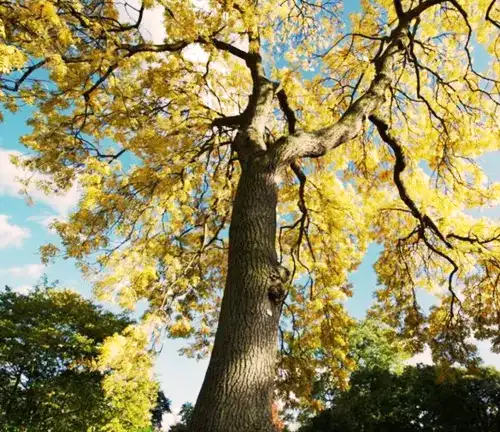
Frequently Asked Questions (FAQs)
- Are all European Ash Trees equally susceptible to the Emerald Ash Borer beetle?
No, susceptibility varies among individual trees. Some European Ash trees may exhibit a degree of resistance to the invasive Emerald Ash Borer beetle, highlighting the importance of studying and promoting such resistant strains for conservation efforts. - Do European Ash Trees have any specific cultural significance in European folklore or traditions?
Yes, the European Ash holds cultural significance in various European traditions. In Norse mythology, it’s associated with Yggdrasil, the World Tree. Additionally, in some cultures, it’s believed that hanging ash leaves in the home can ward off evil spirits. - Can the wood of the European Ash Tree be sustainably harvested?
Yes, sustainable harvesting practices can be applied to European Ash. Responsible forestry management, selective cutting, and replanting initiatives are crucial to maintaining the health of ash populations and ensuring the continued availability of this valuable timber resource. - Are there any particular companion plants that thrive when planted near European Ash Trees?
European Ash Trees can provide a beneficial environment for certain plants. Under their canopy, shade-tolerant species like ferns and woodland flowers may flourish. Understanding the compatible plant species can contribute to creating harmonious ecosystems in ash-dominated areas. - How does climate change impact the growth and health of European Ash Trees?
Climate change can have multifaceted effects on European Ash Trees. Altered precipitation patterns, temperature fluctuations, and the spread of pests due to milder winters can pose challenges. Ongoing research is crucial to understanding the tree’s adaptive responses and implementing conservation strategies in the face of changing climatic conditions.


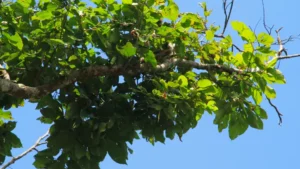
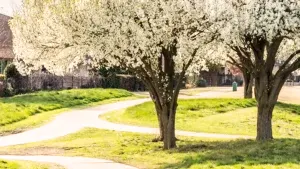
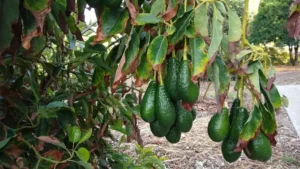

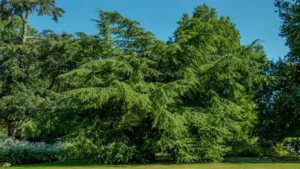

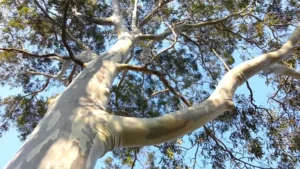
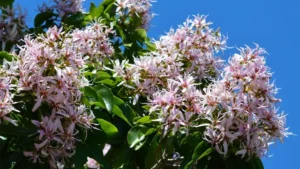
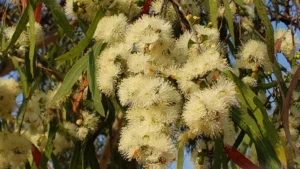
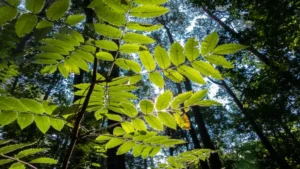

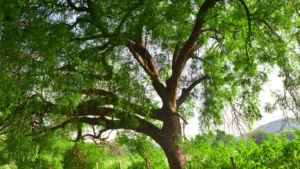
Leave your comment